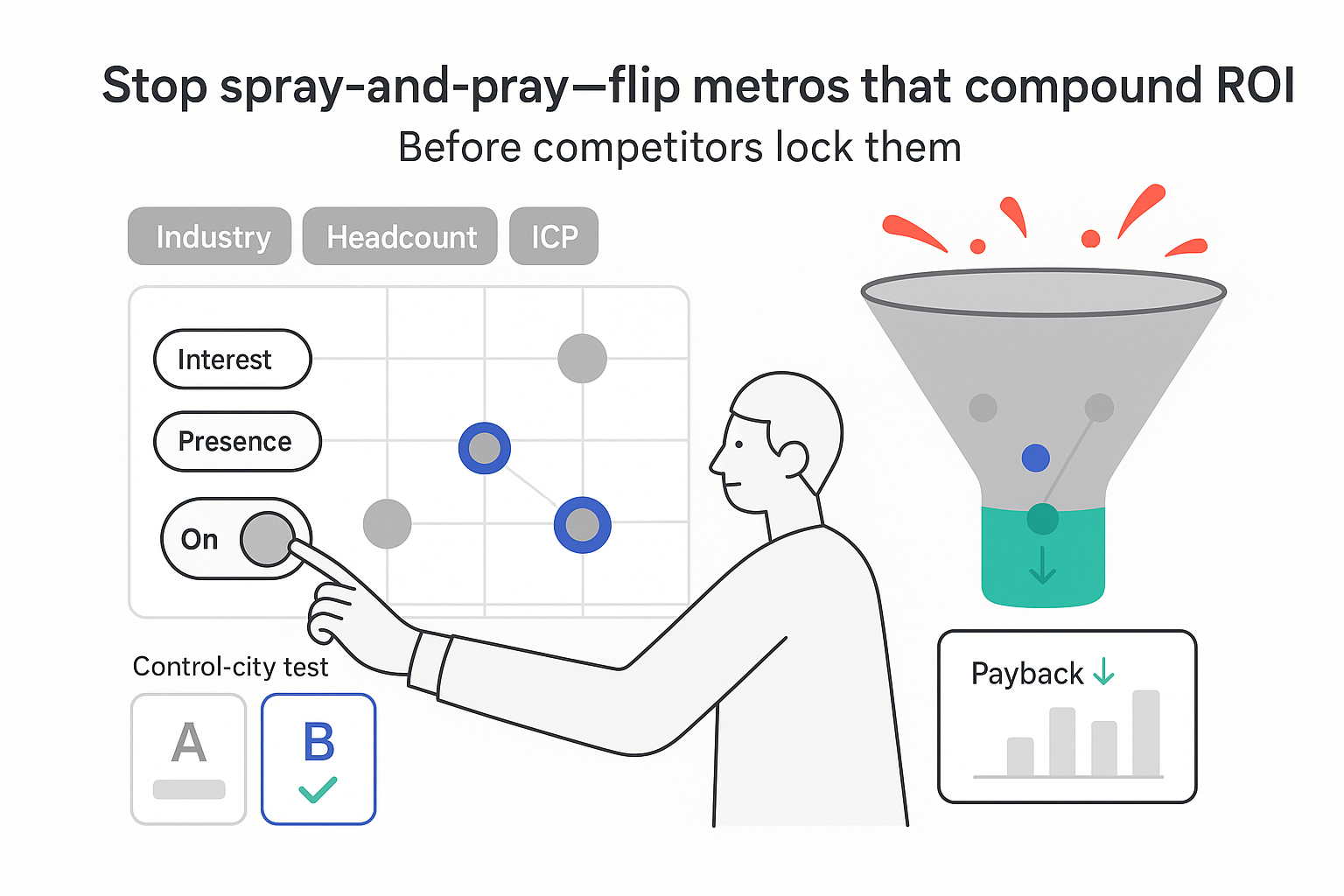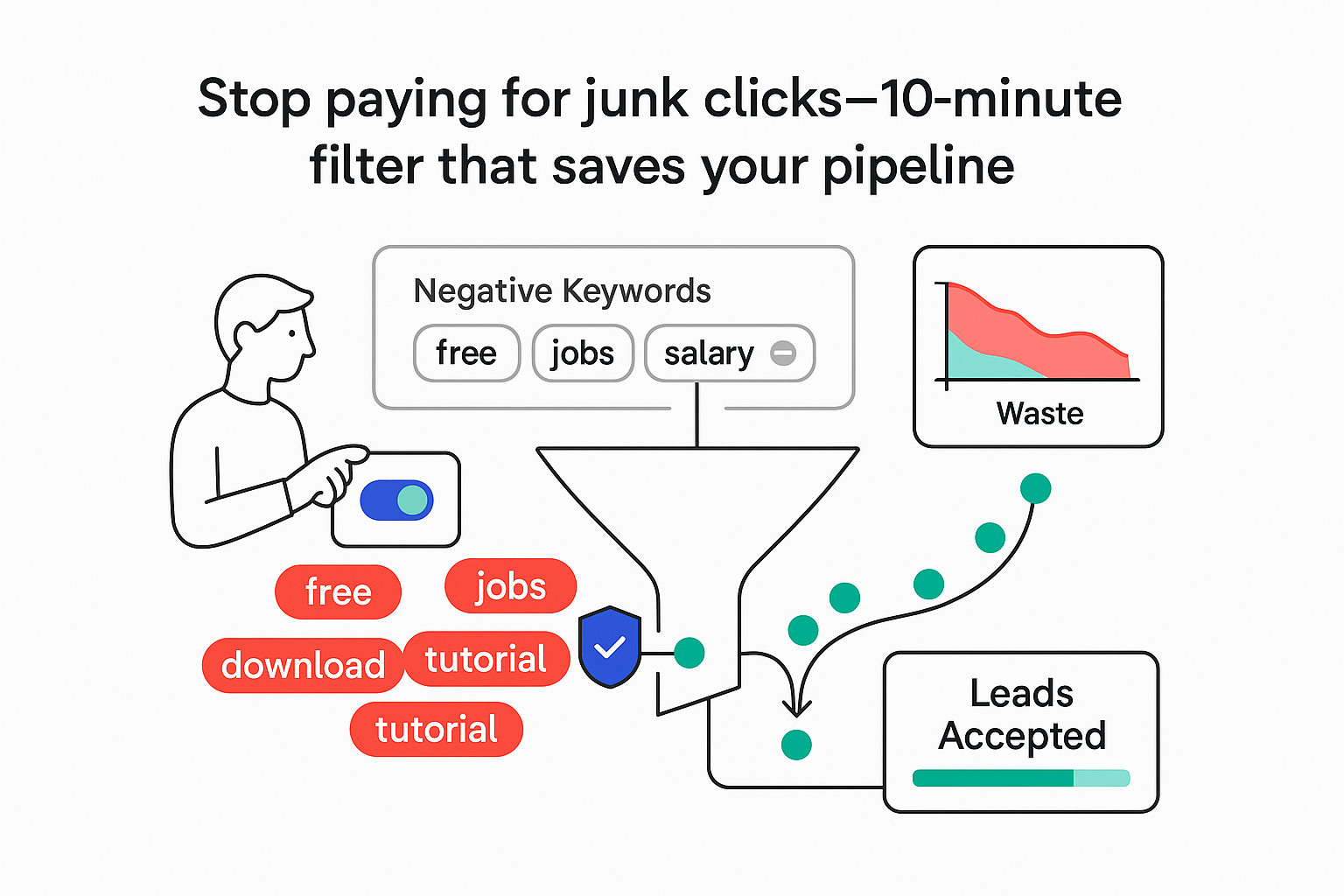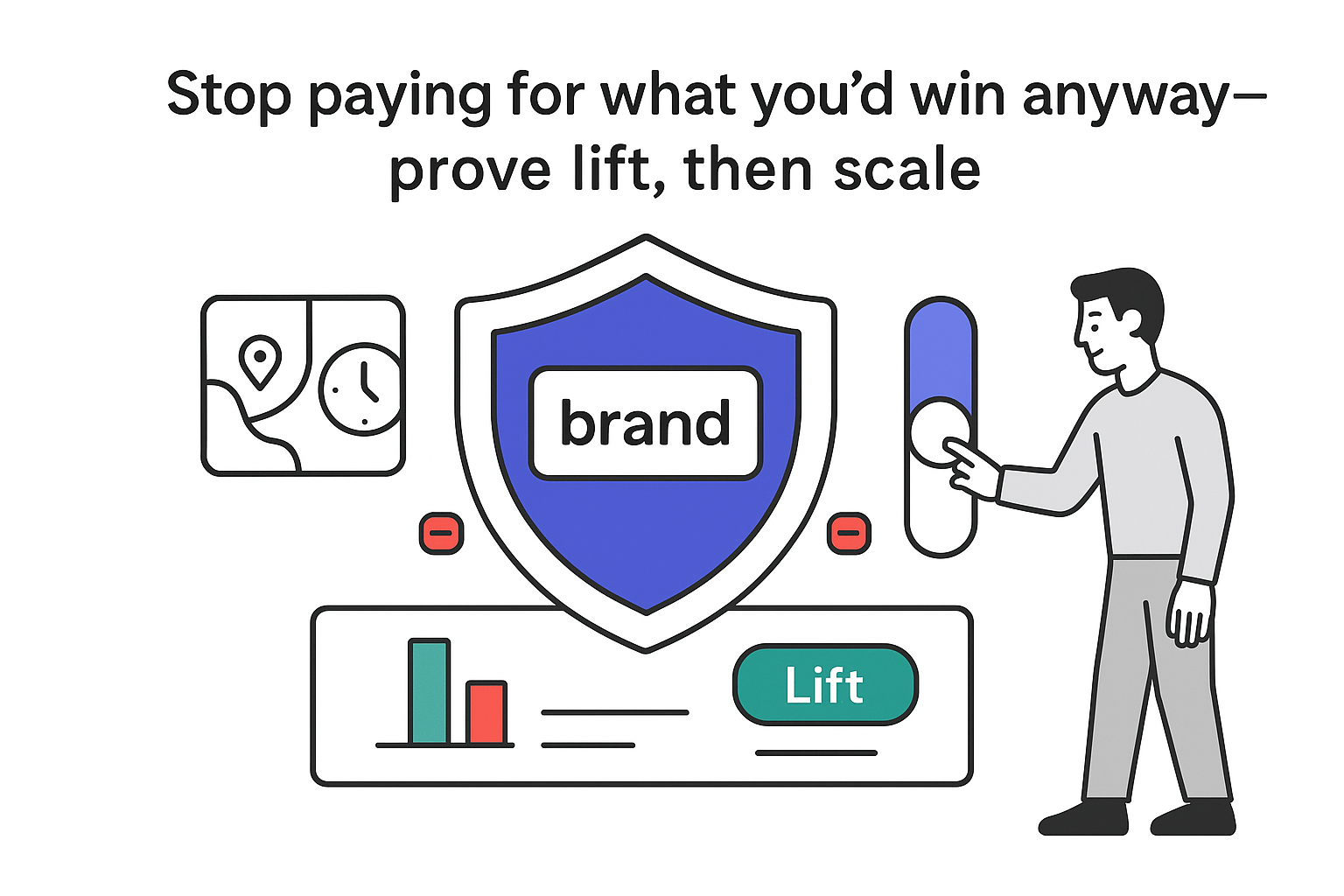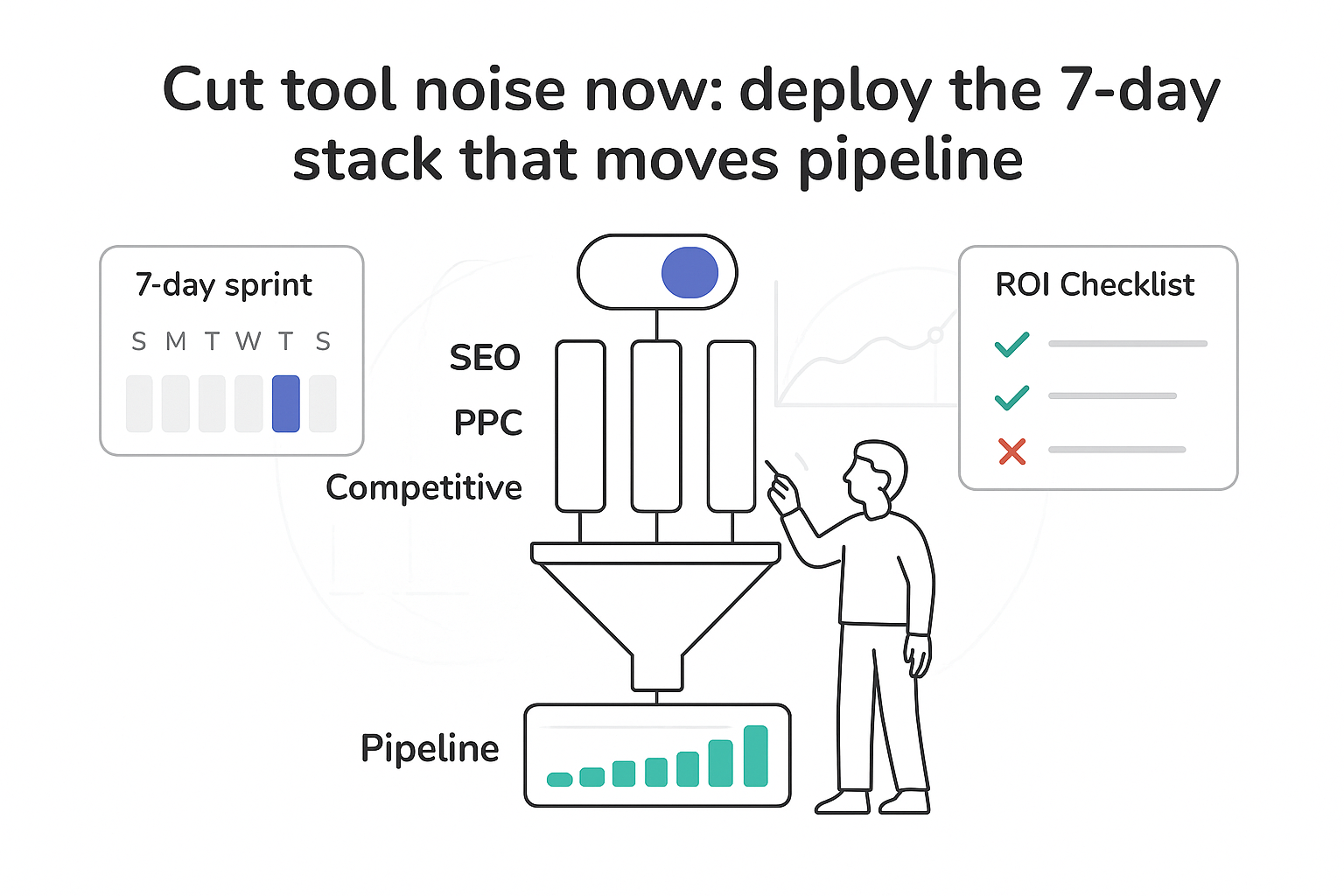When my outbound is humming, everything else gets easier - more meetings booked, a cleaner pipeline, and a calmer finance forecast. If I run a B2B service company and want more control without more headcount, AI tools for cold email outreach can help. Not magic, not set-and-forget - smart assistants that save time, keep quality up, and scale what already works.

Where AI actually helps in cold email outreach
TL;DR quick wins I consistently see
- Research and enrichment: Auto-enrich leads with context that fuels relevant intros. Expect higher positive reply rates and smoother handoffs to sales. See options for tools for lead generation and sources of pre-verified leads.
- Personalization: Draft dynamic first lines tied to each prospect’s company news or pains. Expect more meetings booked and fewer spam complaints. For guidance, explore AI-driven messaging.
- Variant testing: Spin safe variants for subject lines and calls to action. Expect compounding gains as the system learns. More on orchestration with outreach automation and using an email autoresponder.
- Verification and list cleanup: Protect sender reputation, reduce bounces, and keep domains healthy. How to verify leads and evaluate the best email verification tools.
The pattern is simple: AI speeds up the pieces of the process I already value. It doesn’t fix a weak ideal customer profile, a fuzzy message, or a list built from junk data. I start from a strong base, then let AI multiply it.
A quick example to make it concrete
- A B2B cybersecurity consultancy running 5,000 cold emails per month used simple merge tags and saw a 0.8 percent positive reply rate and a 20 percent bounce rate on some lists.
- They layered in AI to enrich titles and tech stack, added dynamic openers tied to recent security audits in the news, and verified lists to a 97 percent deliverable threshold.
- Over 60 days, positive replies climbed to 2.7 percent and bounces dropped under 1.5 percent. Meetings per month grew from 14 to 46 at the same send volume. No new reps - just cleaner data, smarter copy, and consistent testing.
- Caveat: results depend on list quality, message-market fit, and deliverability hygiene. AI amplifies what’s already pointed in the right direction.
The foundation AI cannot replace
AI only performs as well as the targeting and message I feed it. Before I touch automation:
- I tighten the ICP and disqualify bad-fit segments. Practical guides to build sharper customer profiles help here.
- I define pains, triggers, and buying roles with crisp examples.
- I validate a baseline sequence manually on a small, clean list to ensure deliverability and message resonance.
If those fundamentals are shaky, AI just helps me make the wrong thing faster.
How I choose AI tools for cold outreach
Before comparing features, I set a decision frame: the stack must fit my ICP, slot into the CRM without friction, and produce numbers that finance trusts. Here’s what I confirm:
1) ICP data quality
- Enrichment accuracy on firmographics, tech stack, and seniority
- Transparent data sources and freshness windows
- Ability to score accounts first, then pick contacts - including options like 450M+ pre-verified B2B leads
2) Deliverability safeguards
- Built-in verification to 95 percent plus deliverable status
- Domain/inbox warming alternatives with clear send limits
- DKIM, SPF, and DMARC checks with alerts and real-time deliverability monitoring
3) Personalization at scale
- Dynamic snippets beyond first name and company
- Signals like hiring velocity, product launches, or content topics
- Prompt controls so my voice stays consistent and claims stay accurate - see AI-driven messaging
4) Analytics depth
- Delivered, opens (with Apple MPP caveat), clicks, replies (with sentiment), meetings, and opportunities
- Segmentation by persona, industry, and offer
- Testing that learns and retires weak variants
5) Integrations and data control
- Bi-directional sync for contacts, activities, and deals
- Admin permissions and audit trails
- Easy exports and a clear path out if I switch vendors later
Common pitfalls I avoid
- Vendor lock-in: limited exports, trapped custom fields, or proprietary formats
- AI hallucinations: fabricated facts sneaking into openers - hard guardrails and disallowed claims are non-negotiable
- Weak data provenance: vague sourcing that invites compliance risk or stale info that erodes trust
A quick ROI sanity check
Inputs I track
- Monthly prospects emailed
- Delivered rate
- Reply rate and positive reply rate
- Meeting rate per positive reply
- Close rate from meetings
- Average contract value (ACV)
Example math
- 5,000 sends, 98 percent delivered, 6 percent replies, 40 percent positive, 35 percent of positives become meetings, 20 percent close rate, 25,000 dollars ACV
- Delivered: 4,900
- Replies: 294
- Positive: 118
- Meetings: 41
- Closed deals: 8
- Projected new revenue: 200,000 dollars from that month’s meetings as they close over time
Now stress-test an improvement: if AI lifts positive replies from 40 percent to 55 percent and reduces time spent per sequence by 30 percent, meetings rise to 58 and cost per meeting falls. That’s the kind of shift I can credibly defend to leadership - more yield without more headcount.
Capabilities that matter most
Lead data, verification, and domain health
- Verification threshold: I aim for 95 percent plus deliverable status before sequencing.
- Speed: real-time or near real-time checks reduce stale records.
- Bounce risk: if “unknowns” exceed 5 percent, I segment them for retargeting or manual review.
- Domain health: I monitor complaint rates under 0.1 percent and bounces under 2 percent across campaigns.
- Warming: I start new domains at low daily sends and ramp gradually over two to four weeks, using engagement signals rather than fixed jumps.
- Process discipline: Prospecting → Enrichment → Verification → Sequencing → Replies → CRM updates. Skipping steps usually shows up later as deliverability pain.
Personalization that earns replies
- What I include: firmographics (industry, employee range, location, hiring), intent cues (content topics, roles hiring, tech changes), and timely trigger events (launches, partnerships, leadership changes, conference talks).
- Prompts I use:
- Draft a first line that ties to their latest funding news and the impact on compliance needs in North America. Keep it under 30 words and avoid hype.
- Write three subject line options that reference their hiring for senior data roles and onboarding analytics vendors. Five words max each.
- Do and don’t:
- Do be specific and verifiable, keep the opener about them, and limit the ask on first touch.
- Don’t invent facts, fake familiarity, overuse buzzwords, or paste generic AI tone - read it aloud and check it sounds like me.
- Before and after example:
- Before: Hi Sarah, I help companies like Company with security assessments. Are you open to a quick chat?
- Positive replies: 0.6 percent
- After: I noticed Acme announced a SOC 2 plan in last quarter’s update. Most teams get stuck mapping vendor access. Want a brief rundown of where assessments usually stall for service firms your size?
- Positive replies: 2.1 percent
- Before: Hi Sarah, I help companies like Company with security assessments. Are you open to a quick chat?
Analytics and learning loops
- I track at minimum: delivered, opens (with Apple Mail Privacy Protection inflating opens via image prefetch), clicks, replies with sentiment, meetings, pipeline created, and win rate.
- I make variants compete across subject lines, first lines, CTAs, and send times. I promote winners and retire losers quickly.
- I tie attribution to pipeline by segment and offer - the goal is lower CAC and healthier LTV, not vanity clicks.
- My learning loop:
- Launch 2–3 variants per segment
- Wait for statistical significance by segment
- Auto-promote winners, retire losers
- Log insights to a playbook
- Feed CRM outcomes into the next round
Two tools I see teams layer in
Instantly.ai
- Strengths I value: multi-account sending, inbox rotation, and deliverability helpers that keep volume steady across domains; basic AI assistance for subject lines, snippets, and sequencing logic; practical warm-up alternatives while ramping.
- Caveats: domain rotation helps, but sloppy targeting still triggers blocks - ethics and quality matter; inbox placement varies by segment and season, so I test seeds and watch complaints weekly.
- Steps I verify before sending:
- Domains authenticated with SPF, DKIM, and DMARC
- New inboxes warmed with low sends and genuine interactions
- Only verified contacts (95 percent plus deliverable) imported
- Fields mapped to CRM and full sync tested on a small batch
- Two to three sequence variants with clear hypotheses loaded
- Daily send caps set; bounces and complaints monitored for two weeks
Lavender.ai
- What it does well for me: acts like an AI writing coach inside my inbox or sequencing workflow; scores drafts for clarity, tone, and personalization depth; suggests shorter, sharper lines that match how buyers actually read.
- Important note: Lavender is not a sender; I pair it with my outreach platform and CRM. I set guardrails for voice, claims, and compliance so every draft stays on-brand and accurate.
- Prompt templates I’ve found useful:
- Pain lead: Write a 40-word opener for a CTO at a mid-market logistics firm that just posted about delayed data pipelines. Speak to the cost of missed ETL windows and offer a quick diagnostic call.
- Case lead: In 2 sentences, reference a similar client’s 30 percent faster onboarding time and ask if they want the 4-step framework I used. Avoid buzzwords.
- Insight lead: Draft a one-line insight on why vendor sprawl inflates compliance audits for service companies, then a one-line ask to send a short teardown.
- Reasonable lift to expect: shorter emails and sharper subject lines often lift replies by 20–40 percent from baseline within a month, and variance narrows across reps so the floor rises while the ceiling stays high.
For deeper context on orchestration and AI capabilities, see how AI agents operate across tasks.
Operating rhythm, compliance, and seasonality
Sequence structure I rely on
- First touch under 120 words: opener about them, one line on the problem I solve, one proof point, one simple ask.
- Cadence: 6–8 touches over 21–28 days across email and, if appropriate, LinkedIn. If reply intent is unclear, I simplify - clutter lowers trust.
- Segmentation: I segment by pains, not just persona. A COO with a churn problem reads differently than a CTO chasing latency fixes.
- Suppression: if someone opts out, stops engaging, or bounces, I suppress quickly and update CRM status.
Compliance and ownership still matter
- I keep opt-out links clear, log suppression, and double-check consent where needed. CAN-SPAM, GDPR, and regional rules still apply; whether I rely on consent or legitimate interest depends on jurisdiction and context. When in doubt, I get legal guidance.
- I assign owners: one for data quality, one for deliverability, one for analytics. Weekly reviews on the numbers keep the machine honest.
Seasonality and expectations
- Outreach can be lumpy in late December and late summer. I keep volumes steady, watch domain health closely, and save major tests for January, March, September, and October when calendars tend to be friendlier.
- When it’s working, I see more good replies and fewer spam complaints, faster call prep because context lands in the CRM, meetings ticking up without a headcount spike, and clearer attribution from cold outreach to pipeline - exactly what I want when other channels get pricey.







.svg)